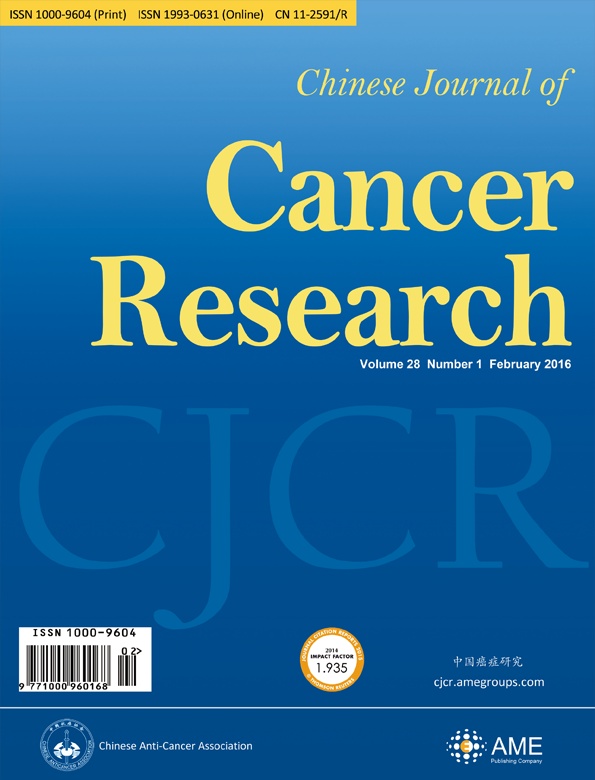钆酸增强MRI纹理分析预测肝细胞癌Ki-67状态的前瞻性研究
IF 7
2区 医学
Q1 ONCOLOGY
引用次数: 32
摘要
目的探讨肝细胞癌(HCC)术前钆酸增强磁共振成像(MRI)全病变纹理分析对预测术后肿瘤Ki-67状态的价值。方法本研究包括89例经手术证实的HCC患者。基于感兴趣的整个病变区域从多参数MRI中提取纹理特征。免疫组化测定Ki-67的状态,并将其分为低Ki-67(标记指数≤15%)和高Ki-67组(标记指数>15%)。应用最小绝对收缩选择算子(LASSO)和多元逻辑回归生成纹理特征、临床列线图和组合列线图。对这三个模型的辨别力、校准和临床有用性进行了相应的评估。比较两组治疗性肝切除术后的无复发生存率。结果共选择13个纹理特征构建了预测HCC患者Ki-67状态的纹理特征(C指数:0.878,95%置信区间:0.791−0.937),决策曲线分析显示,组合列线图具有较高的判别能力(C指数:0.936vs 0.795,Hosmer-Lemeshow检验中P0.05)和较高的临床实用性。术后高Ki-67组的RFS发生率明显低于低Ki-67对照组(63.27%对85.00%,P<0.05)。纹理特征和临床因素的结合证明了进一步提高预测性能的潜力。本文章由计算机程序翻译,如有差异,请以英文原文为准。
Texture analysis on gadoxetic acid enhanced-MRI for predicting Ki-67 status in hepatocellular carcinoma: A prospective study
Objective To investigate the value of whole-lesion texture analysis on preoperative gadoxetic acid enhanced magnetic resonance imaging (MRI) for predicting tumor Ki-67 status after curative resection in patients with hepatocellular carcinoma (HCC). Methods This study consisted of 89 consecutive patients with surgically confirmed HCC. Texture features were extracted from multiparametric MRI based on whole-lesion regions of interest. The Ki-67 status was immunohistochemical determined and classified into low Ki-67 (labeling index ≤15%) and high Ki-67 (labeling index >15%) groups. Least absolute shrinkage and selection operator (LASSO) and multivariate logistic regression were applied for generating the texture signature, clinical nomogram and combined nomogram. The discrimination power, calibration and clinical usefulness of the three models were evaluated accordingly. Recurrence-free survival (RFS) rates after curative hepatectomy were also compared between groups. Results A total of 13 texture features were selected to construct a texture signature for predicting Ki-67 status in HCC patients (C-index: 0.878, 95% confidence interval: 0.791−0.937). After incorporating texture signature to the clinical nomogram which included significant clinical variates (AFP, BCLC-stage, capsule integrity, tumor margin, enhancing capsule), the combined nomogram showed higher discrimination ability (C-index: 0.936vs. 0.795, P<0.001), good calibration (P>0.05 in Hosmer-Lemeshow test) and higher clinical usefulness by decision curve analysis. RFS rate was significantly lower in the high Ki-67 group compared with the low Ki-67 group after curative surgery (63.27%vs. 85.00%, P<0.05). Conclusions Texture analysis on gadoxetic acid enhanced MRI can serve as a noninvasive approach to preoperatively predict Ki-67 status of HCC after curative resection. The combination of texture signature and clinical factors demonstrated the potential to further improve the prediction performance.
求助全文
通过发布文献求助,成功后即可免费获取论文全文。
去求助
来源期刊
自引率
9.80%
发文量
1726
审稿时长
4.5 months
期刊介绍:
Chinese Journal of Cancer Research (CJCR; Print ISSN: 1000-9604; Online ISSN:1993-0631) is published by AME Publishing Company in association with Chinese Anti-Cancer Association.It was launched in March 1995 as a quarterly publication and is now published bi-monthly since February 2013.
CJCR is published bi-monthly in English, and is an international journal devoted to the life sciences and medical sciences. It publishes peer-reviewed original articles of basic investigations and clinical observations, reviews and brief communications providing a forum for the recent experimental and clinical advances in cancer research. This journal is indexed in Science Citation Index Expanded (SCIE), PubMed/PubMed Central (PMC), Scopus, SciSearch, Chemistry Abstracts (CA), the Excerpta Medica/EMBASE, Chinainfo, CNKI, CSCI, etc.

 求助内容:
求助内容: 应助结果提醒方式:
应助结果提醒方式:


